Ceramic tableware has become a staple in modern kitchens and dining rooms. From everyday meals to special occasions, ceramic plates, bowls, and cups combine beauty, durability, and practicality. If you’ve ever wondered what is ceramic tableware, how to choose the right set, or how to care for it, this guide will provide everything you need to know. Whether you are a homeowner, a restaurant owner, or a porcelain enthusiast, understanding ceramic tableware can elevate your dining experience and make your meals more enjoyable. Let’s dive in.
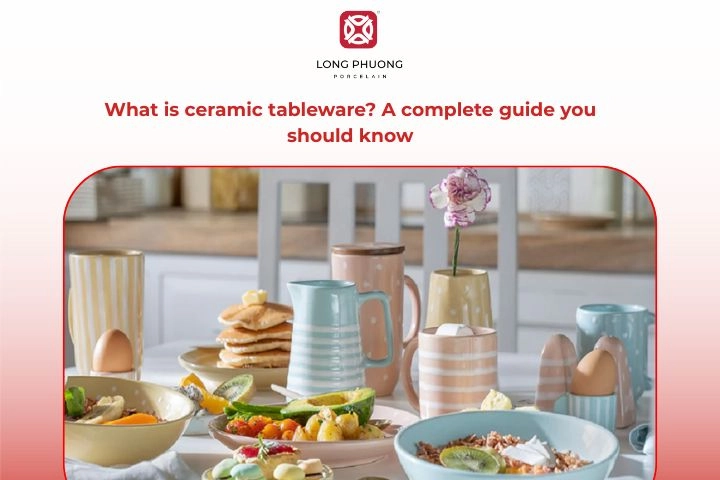
1. What is ceramic tableware?
Ceramic is broad, referring to items made from clay that has been shaped and then fired at high temperatures in a kiln. This process transforms the soft, malleable clay into a hard, rigid, and durable material.
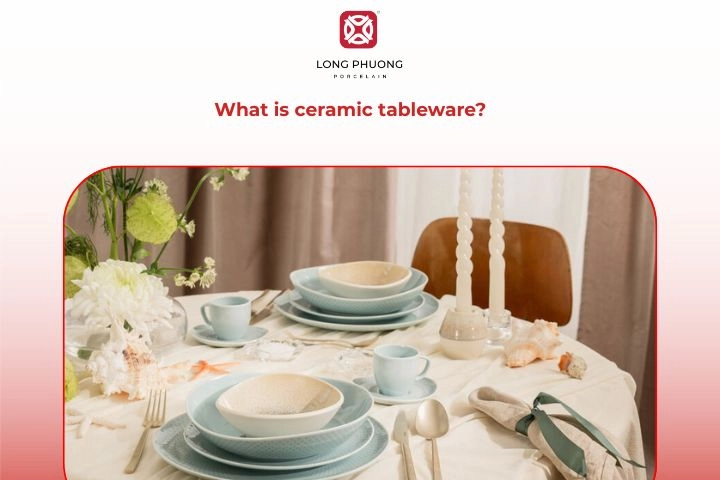
Ceramic tableware encompasses any piece of dinnerware, serving ware, or kitchenware made using this method, including:
- Plates (dinner plates, salad plates, bread plates)
- Bowls (soup bowls, cereal bowls, serving bowls)
- Mugs and cups
- Serving platters and pitchers
- Specialty items like butter dishes or gravy boats
The appeal of ceramic tableware lies in its versatility—it can be molded into virtually any shape and adorned with countless glazes and designs.
2. Common types of ceramic tableware
Ceramic tableware comes in various types:
- Earthenware: Fired at lower temperatures, it is more porous and often heavier. Best for rustic or casual dining.
- Stoneware: Fired at high temperatures, making it durable and chip-resistant. Popular for everyday dinnerware sets.
- Porcelain: Finer, smoother, and usually white, porcelain is highly durable and often used for luxury or formal dining.
When choosing a set of ceramic tableware, consider the material based on your needs, durability preferences, and style.

3. Ceramics vs. Porcelain tableware: what’s the difference?
Many people wonder: what’s the difference between ceramic and porcelain tableware? Here’s a simple comparison:
| Feature | Ceramics | Porcelain |
| Raw Material | Less refined clay, often with mineral impurities. | Highly refined clay, primarily Kaolin (china clay). |
| Firing Temperature | Lower to Medium (approx. 900∘C – 1300∘C) | High (approx. 1200∘C – 1450∘C) |
| Vitrification | Partially vitrified or non-vitrified (porous). | Fully vitrified (glass-like structure, non-porous). |
| Porosity | Can be slightly porous (requires thick glaze). | Non-porous (highly resistant to moisture/stains). |
| Thickness & Weight | Generally thicker and heavier. | Generally thinner, lighter, and more delicate looking. |
| Translucency | Opaque (light cannot pass through). | Translucent (light can often pass through thin sections). |
| Durability | Durable for everyday use, but more prone to chipping and scratching than porcelain. | Extremely durable, chip-resistant, and high strength-to-weight ratio. |
| Aesthetics | Often has a rustic, artisanal, or handcrafted appearance; natural color variation. | Elegant, pristine white, or fine, smooth finishes; suitable for formal settings. |
| Best Use | Casual, everyday dining; rustic or farmhouse styles. | Fine dining, commercial (hotel/restaurant) use, and formal occasions. |
Porcelain is technically a type of ceramic, but it is finer and more durable. When choosing ceramic dinnerware set, consider your lifestyle and whether you need daily durability or a statement piece for special occasions.
See more: Long Phuong Porcelain – A trusted porcelain tableware manufacturer
4. Benefits of using ceramic tableware in our regular life
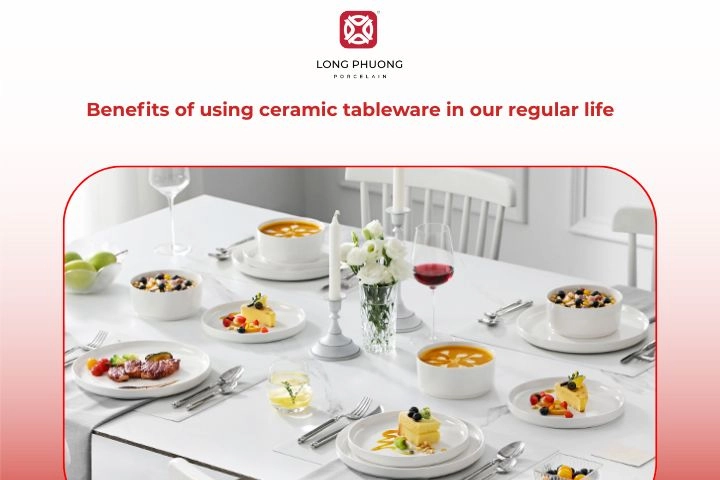
Using ceramic tableware offers multiple advantages:
- Durability and Longevity: High-quality ceramic tableware, especially porcelain, is incredibly strong. It resists scratches, chips, and breakage, making it a sustainable choice that can last for decades.
- Safety and Hygiene: Fully vitrified ceramics, like porcelain, are non-porous. This means they do not harbor bacteria or absorb food odors and flavors, making them perfectly safe for daily use.
- Versatility in Use: Most modern ceramic set tableware is designed to handle high and low temperatures. They are typically microwave-safe, oven-safe (check manufacturer’s guide), and dishwasher-safe, offering unmatched convenience.
- Aesthetic Appeal: From classic white porcelain to vibrant hand-painted stoneware, ceramic dinnerware offers a limitless range of styles to match any home décor or dining event.
- Heat Retention: Ceramics retain heat very well, keeping your hot food warm longer at the table.
By investing in a ceramic dinnerware, you not only enhance your dining experience but also make a long-term, eco-conscious choice.
5. Choosing the right ceramic tableware set for your home
Choosing the perfect ceramic tableware set involves multiple considerations. Here’s a breakdown:
5.1. Size and shape
Consider the number of people you serve regularly. A ceramic set tableware with standard sizes (dinner plate, salad plate, soup bowl, cup) is versatile. Oval, square, or round shapes can complement your table setting and storage space.
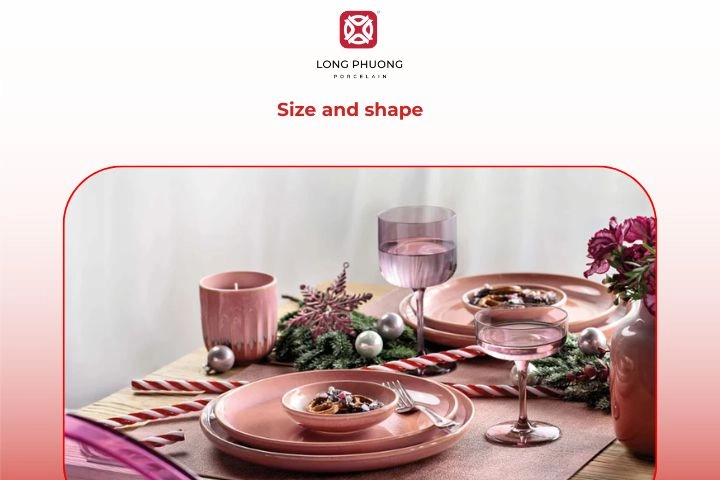
5.2. Design and style
From minimalist to ornate designs, your dinnerware should match your dining room style. Choose colors and patterns that complement your table linens and kitchen theme.
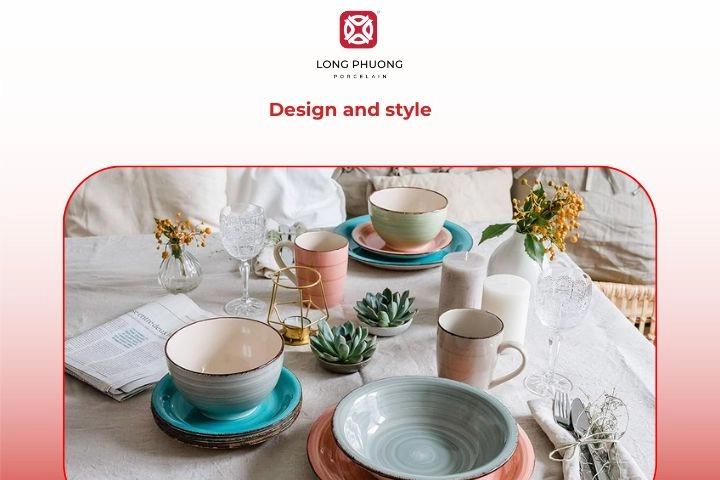
5.3. Maintenance and care
Always check the manufacturer’s recommendations. For the greatest ease, look for ceramic dinnerware set pieces that are explicitly labeled:
- Dishwasher Safe
- Microwave Safe
- Oven Safe
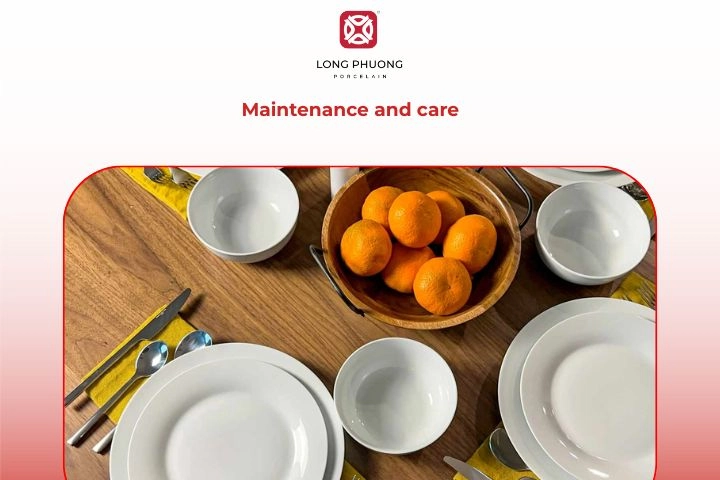
5.4. Versatility and functionality
Invest in pieces that can serve multiple purposes. For instance, a small plate that works as both a bread plate and a saucer, or a deep bowl that can be used for cereal, soup, or a side dish.
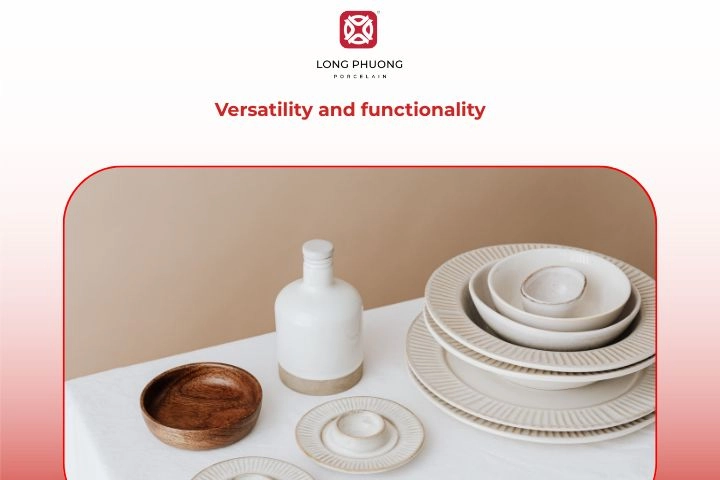
6. How to properly care for dinnerware set to extend its lifespan
Even the most durable ceramic tableware benefits from proper handling. Following these tips will significantly extend the lifespan of ceramic tableware:
- Avoid sudden temperature changes to prevent cracking.
- Use soft sponges and non-abrasive cleaners to protect the glaze.
- Store plates with felt or paper between them to avoid scratches.
- Follow manufacturer guidelines for microwave and dishwasher use.
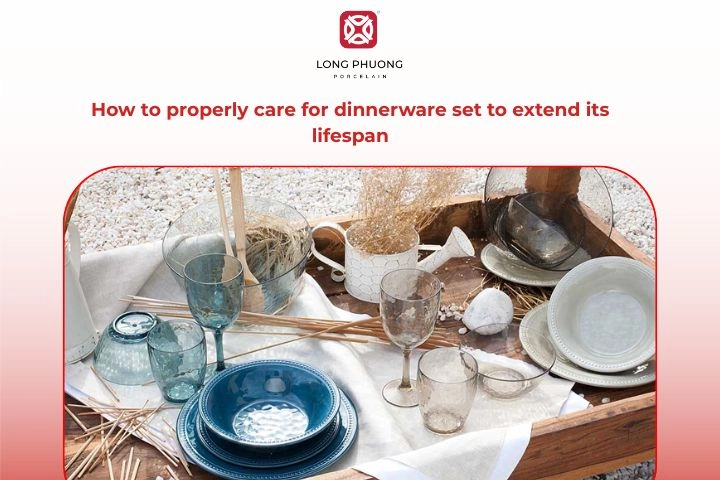
Regular care ensures your ceramic tableware remains beautiful and functional for years.
7. Refer to some beautiful dinnerware set samples
When seeking inspiration for your new dining setup, explore the timeless quality offered by established manufacturers.

Long Phuong Porcelain is renowned for producing high-quality ceramic tableware that balances traditional craftsmanship with modern design. Their collections often highlight:
- Pure White Porcelain: Classic, elegant, and versatile, this highly durable porcelain serves as the perfect backdrop for any meal, from a casual brunch to a formal holiday dinner.
- Durable Restaurant-Grade Quality: Many of their items are designed with reinforced edges, meaning they stand up to the rigorous demands of daily use and commercial settings—proving that is porcelain tableware good for long-term investment.
- Customized Options: Yes, can ceramic tableware be customized! Long Phương offers customization services for businesses (restaurants, hotels) and individuals, allowing for custom logos, unique glazes, and bespoke shapes, ensuring your ceramic set tableware reflects your unique brand or style.
8. FAQs
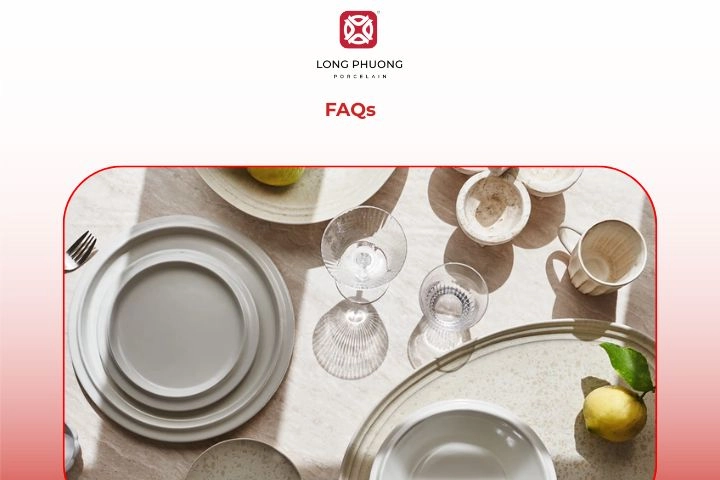
8.1. Is ceramic tableware good?
Yes, ceramic tableware is an excellent choice. It offers a great balance of durability, heat retention, aesthetic variety, and affordability, especially when compared to materials like glass or plastic.
8.2. Can ceramic tableware be customized?
Yes, it certainly can. This can include applying custom glazes, unique decals (logos, patterns), or even developing entirely new shapes for a truly bespoke ceramic dinnerware set.
8.3. What is a ceramic tableware factory?
What is a ceramic tableware factory? It is a specialized industrial facility where the entire production process of ceramics takes place. This includes:
– Preparation: Sourcing and preparing the raw clay (mixing, purifying).
– Shaping: Using techniques like casting, throwing (potter’s wheel), or pressing.
– Firing: The first firing (bisque firing) and the second, higher-temperature firing (glaze firing) in large kilns.
– Glazing and Decoration: Applying the protective, colored glaze and adding any decorative elements.
A good factory maintains strict quality control to ensure the final ceramic tableware is safe, durable, and meets all standards.
8.4. Which is better, porcelain or ceramic dinnerware?
Porcelain is generally considered superior to standard stoneware or earthenware ceramics due to its higher durability, non-porous nature (better hygiene), and resistance to chipping and scratching.
8.5. Is ceramic tableware safe for daily use?
Yes, absolutely. Modern, reputable ceramic set tableware is perfectly safe. The primary concern relates to the glaze. High-quality manufacturers ensure their glazes are lead and cadmium-free, especially for pieces that come into contact with food.
8.6. What is the lifespan of ceramic tableware?
The lifespan of ceramic tableware can range widely. Earthenware might last a few years, while high-quality stoneware and, particularly, fine porcelain or bone china can easily last for 20-30 years or more with proper care. Its non-porous and scratch-resistant properties contribute significantly to this longevity.
8.7. Why are ceramic plates better?
Ceramic plates retain heat well, are durable, easy to clean, and come in a variety of designs suitable for any table setting.
Related articles
- Top 5+ best luxury dinnerware sets
- 12+ beautiful porcelain dinner sets
- Top 10+ porcelain serving platters
- Top 5+ white porcelain plates
- Top 7 best white porcelain teapot set
Long Phuong Group Joint Stock Company
- Phone number: (+84) 989 595 866
- Email: export@longphuong.vn
- Factory: Hap Linh Industrial Cluster, Hap Linh, Bac Ninh, Vietnam
- Showroom Ha Noi: 59 Cua Bac, Ba Dinh Ward, Hanoi, Vietnam
- Showroom Ha Noi: 37 Cua Nam, Cua Nam Ward, Hanoi, Vietnam
- Showroom TP. Ho Chi Minh: 127 Le Thi Rieng, Ben Thanh Ward, Ho Chi Minh, Vietnam
CEO of Long Phuong Group Joint Stock Company, with more than 20 years of exploration and research to obtain the best formulas and professional experience, Long Phuong Porcelain has produced more than 400 designs of all kinds of household porcelain, Significant contributions to Vietnam's ceramic industry.
 Vietnam
Vietnam
